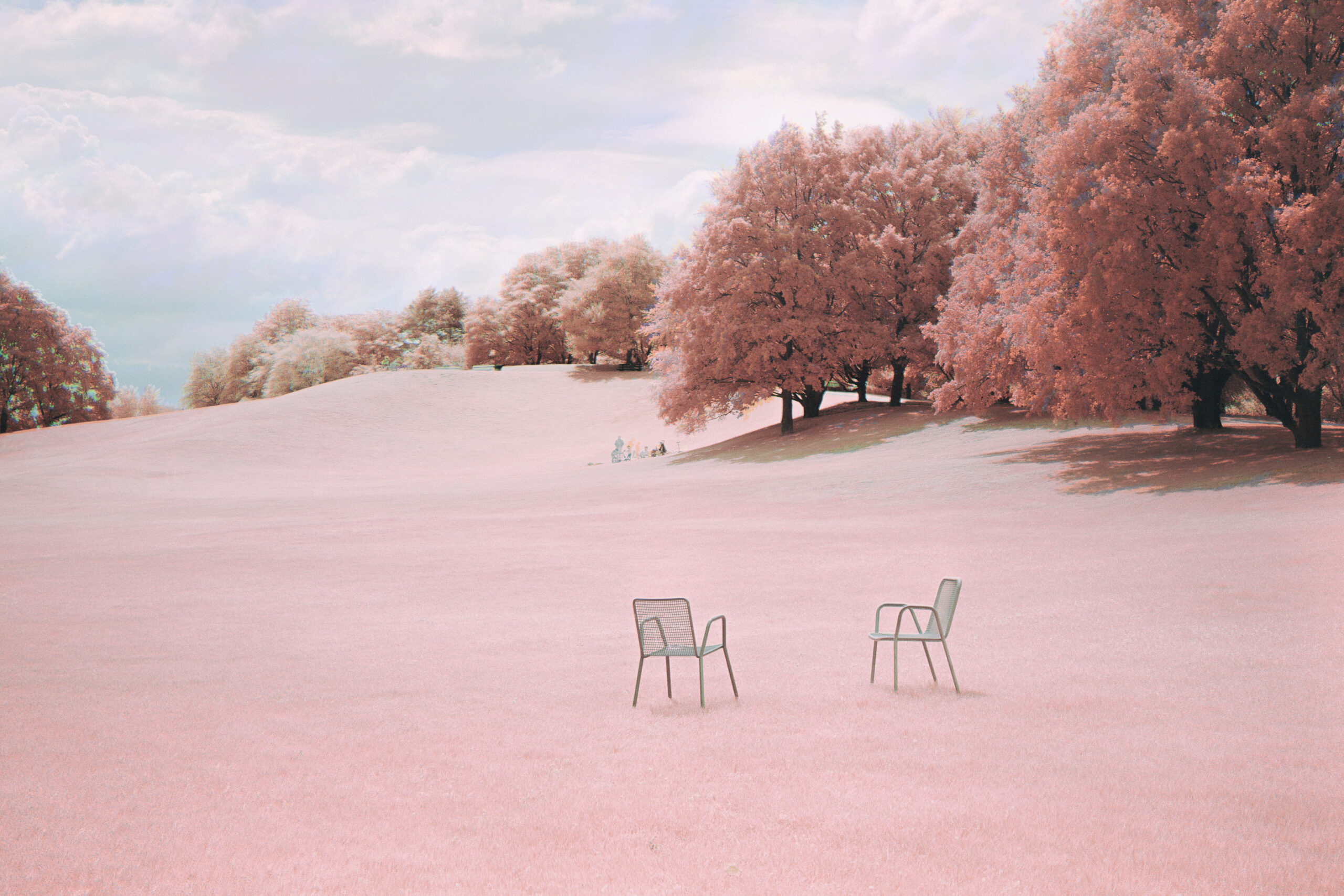Photographer Johan Kropp made the lead image that we found on Flickr. It’s surreal! One might think that it was probably made by an AI today if they didn’t know about film processes. Indeed, this is a film photo. But instead, it’s a process called Trichrome photography. And we talked to him about how he makes his incredible images.
All images by Johan Kropp. Used with permission. For more, please visit his website.
Getting Into Photography
Johan first got into photography as part of the finishing touches on his BA studies. He used a Panasonic LX100 and loved it. Mostly, it was a better way to get photos than his shape. “I found myself enjoying that little camera, its simplicity and the occasional ‘wow’ factor images I could pull out of it,” he tells us. “By taking it with me everywhere, I found it made it more gratifying visiting and documenting unique places, I simply enjoyed the process of really looking deeper at a location through taking images and exploring photography as a creative yet relaxing hobby.” Indeed, this is all just part of the mechanical process of taking images that one truly doesn’t get when using a phone.
Later on, he decided to delve into 35mm. And since then, he learned that gear really depends on your needs. He couldn’t afford the offerings with bigger sensors, so he got into 35mm film instead. He describes this as a relatively cheap barrier.
But these days, he uses a Fujica 690 and a set of filters along with a tripod. “I like to use the larger Fujica, particularly because of how simple and rugged it is and the great size of the negative, which affords me large amounts of detail for landscapes, also helped by the format is the limited number of frames,” he explains. “In general, I take a lot fewer images because of this, and when I do – it’s much more careful shooting. With just 8 or 10 images and much fewer fiddly buttons on the camera – I can be much more conscious of my photography and focus on the other elements that help create a good image.”
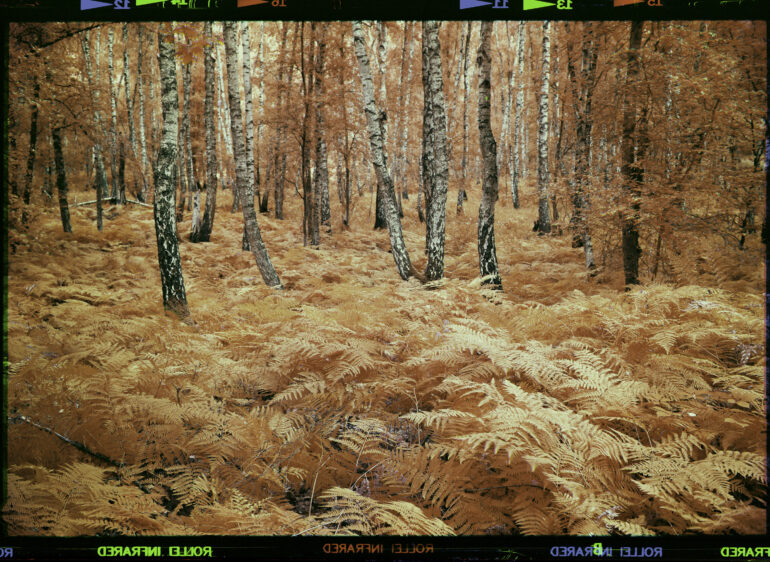
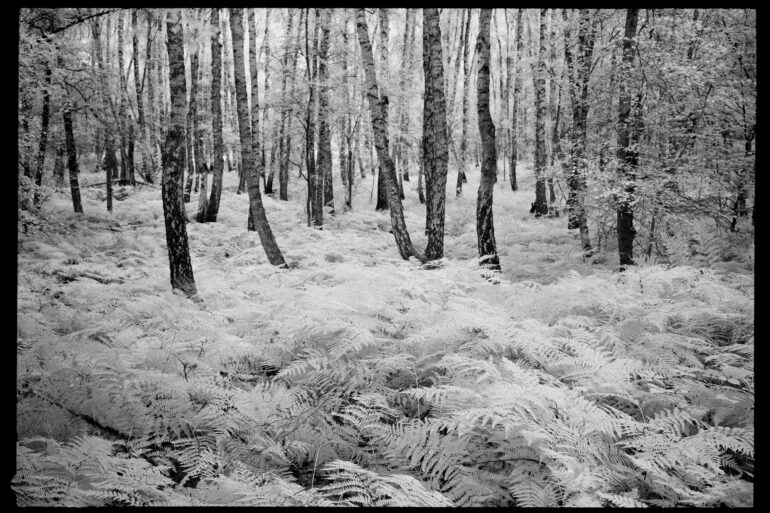
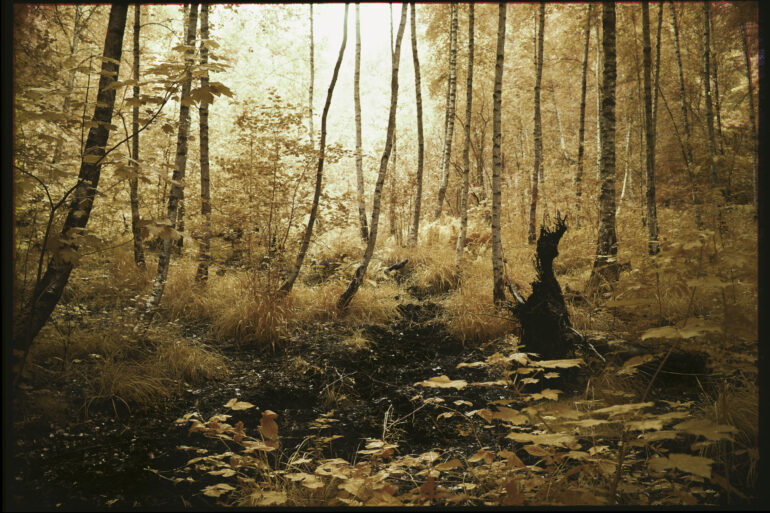
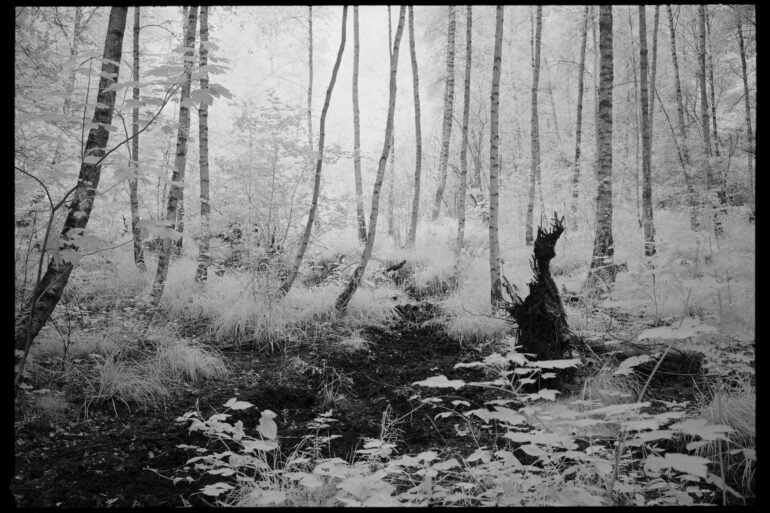
The Creative Vision
When Johan tells us about the photo, he explains that it was an open area of grass and trees. From this scene, he felt something utopian. It was shot using the trichrome approach — and he had total confidence in how he shot it. “…the trick was really finding the right saturation levels between the channels when compositing the final image,” he tells us. “What actually surprised me was that nothing really went wrong with it! As this can be the bane of shooting on film sometimes, it is really a very rewarding feeling when you find that your process comes out as you expected it to.”
He used the first photo on the roll as a control image to be a reference for the filters he was using. If anything, it made him feel much more confident in his metering abilities.
Yes, the second I saw the open area of grass and trees I could feel something quite utopian about it. The basic idea behind a trichrome is shooting 3 frames of black and white film with a red green and blue filter for each color channel, these are then composited together to form an RGB image. In this case, to emulate the Kodak’s now discontinued aerochrome, you would substitute the blue filter for an infrared one, there is a very good blog post that explains the theory behind this written by Joshua Bird.
On Shooting Trichromes
Knowing the basic theory behind the infrared trichrome approach I had total confidence in that image coming out the way it did, the trick was really just finding the right levels between the channels when compositing the final image. What actually surprised me was that nothing really went wrong with it! As this can be the bane of shooting on film sometimes, it is really a very rewarding feeling when you find that your process comes out as you expected it to.
On AI Imagery
Looking at this image, one would wonder if an AI imagery service would be able to make something like this and not make it look like it’s from Mars. But with that said, Johan finds it fascinating. In fact, he wrote his college thesis on something around the topic when he was still studying.
“It is surprising how fast AI has moved from fiction to fact, and is being adopted so quickly in various industries, despite this I think it’s a great step forward for many fields of work,” he tells us. “I mean look at Photoshop now; it’s almost so good it should be illegal. Although it’s nothing to be afraid of yet as a creative, AI image generator tools as they stand right now are not really truly sentient AI; what we are seeing now is more so machine learning applied, at least that is my opinion.” The fact that the AI are creating a mashup of a ton of images makes Johan believe that it’s not really, truly being creative. Instead, it’s all based on algorithms.
“Only when I see a truly sentient Ai that can channel emotion, experience and creativity into generating images and progressively learn and adapt to its own experiences, with the freedom to experiment and think for itself – then I think we would start to see something incredible happen.”


